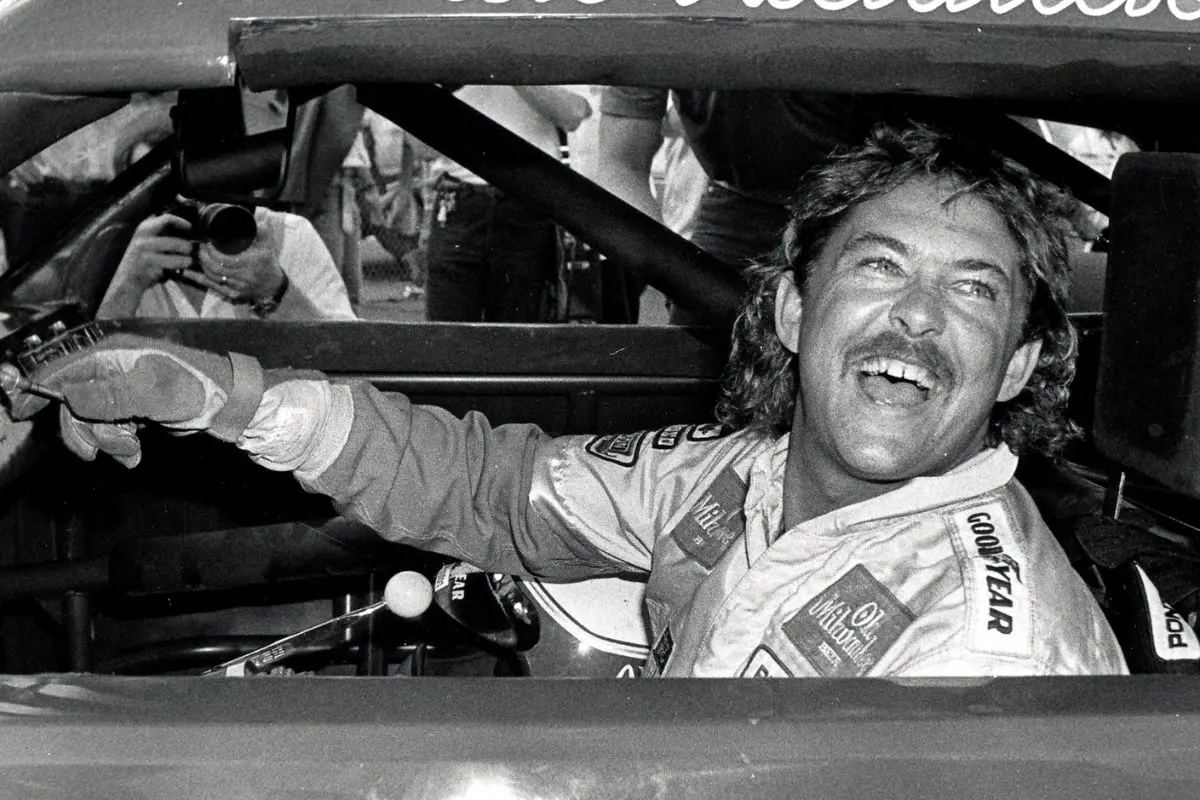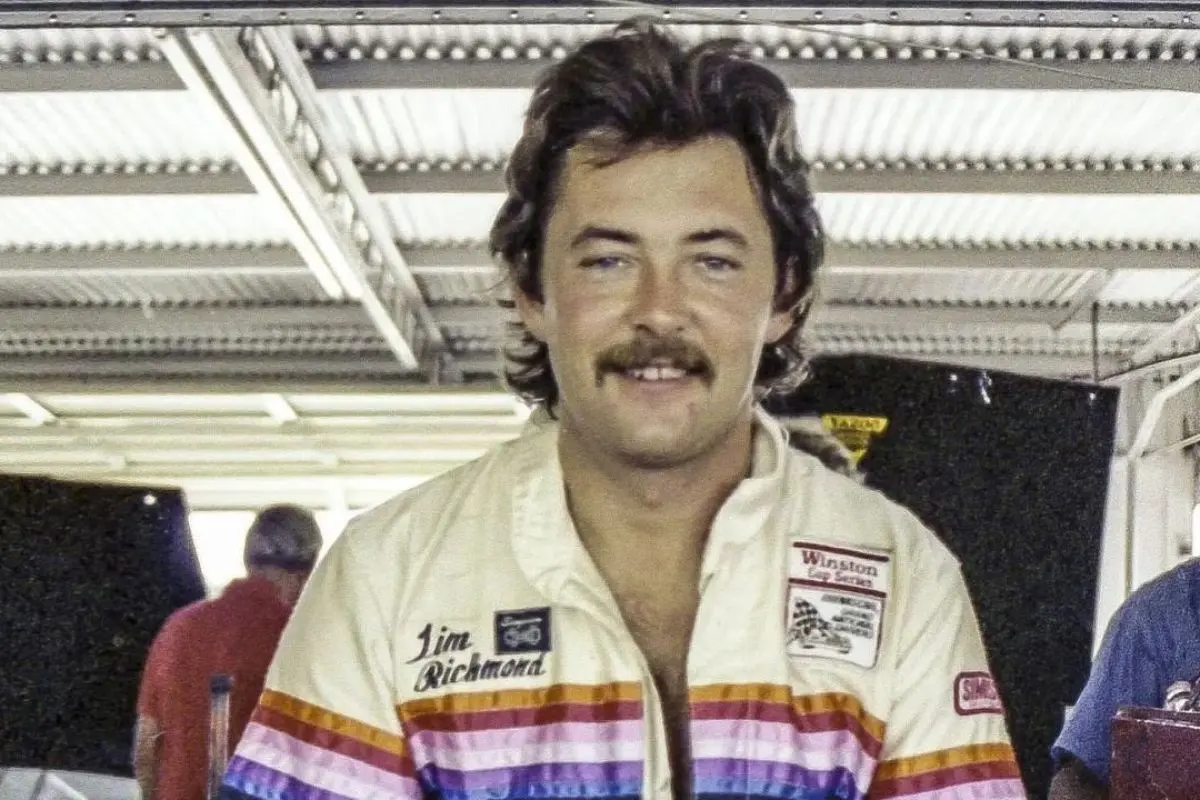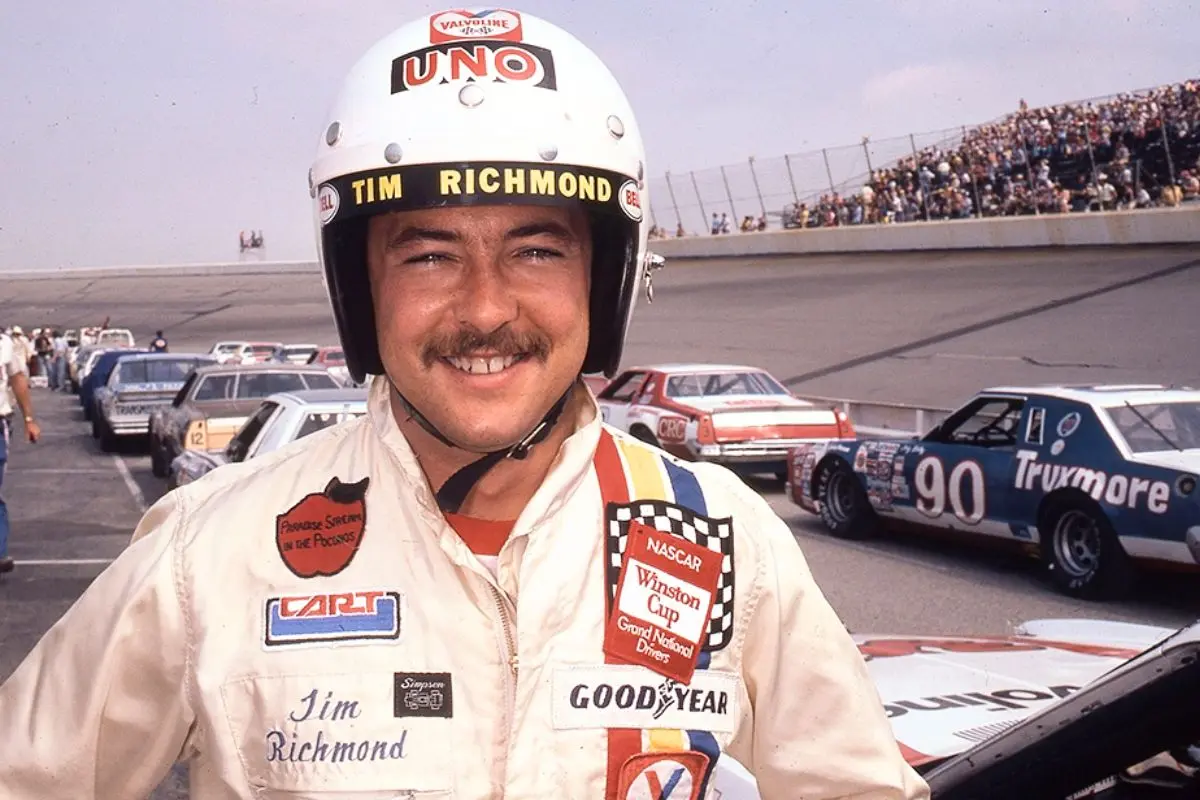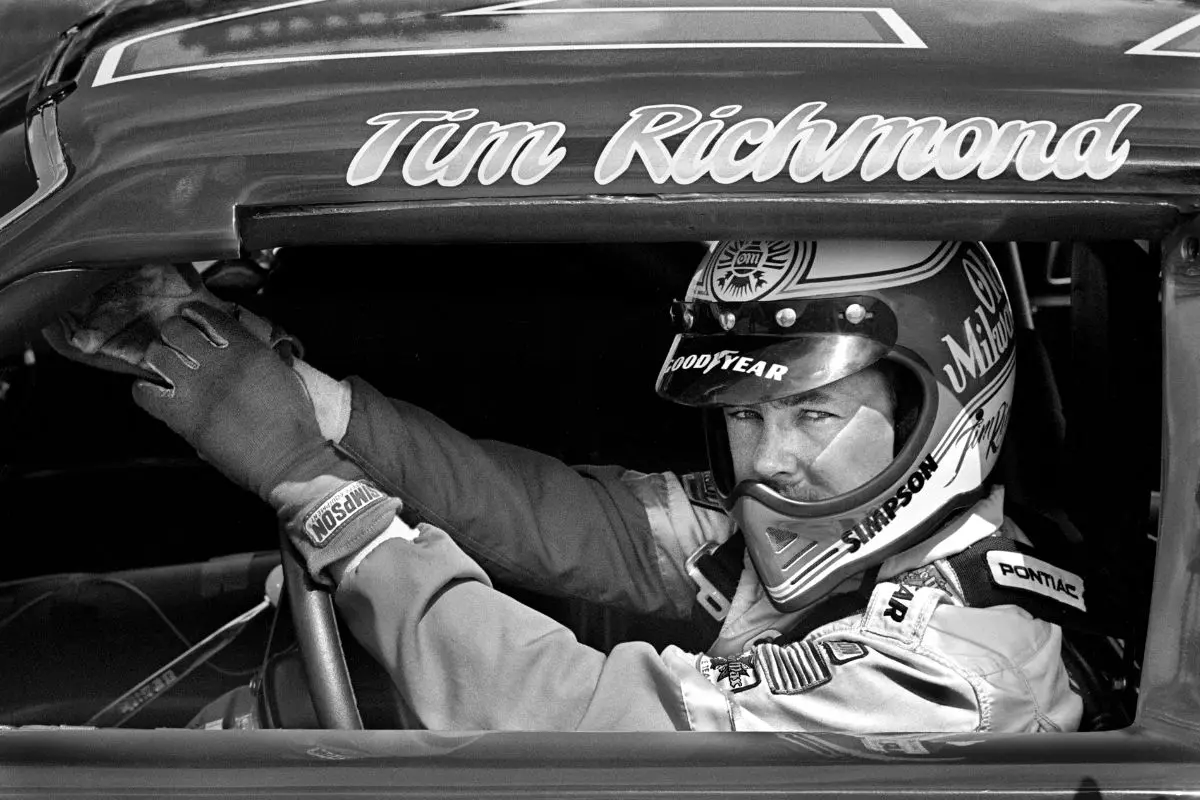In a sport defined by grit, tradition, and southern roots, Tim Richmond emerged in the 1980s as something entirely different. With his movie-star looks, larger-than-life charisma, and fearless driving style, Richmond became one of the most electrifying figures in NASCAR history. He wasn’t just a driver—he was a personality, a showman who brought glamour to the garage and dared to live fast both on and off the track.
Yet, Richmond’s career was also marked by controversy, illness, and tragedy. At his peak, he looked destined to become one of the all-time greats. Instead, his life was cut short at just 34 years old. More than three decades after his passing, his story remains one of NASCAR’s most compelling and heartbreaking tales.
Early Life and Open-Wheel Beginnings
Born on June 7, 1955, in Ashland, Ohio, Tim Richmond grew up far from the heart of stock car country. Unlike many of his NASCAR peers, he didn’t start with dirt track racing in the South. Instead, he developed his passion through open-wheel cars, go-karts, and eventually IndyCar racing.
By 1980, Richmond had made a name for himself in the open-wheel world, capturing the Rookie of the Year award at the Indianapolis 500. At a time when the worlds of IndyCar and NASCAR rarely crossed, Richmond stood out as one of the first drivers bold enough to make the leap from open-wheel to stock cars. His daring career choice set a precedent later followed by other stars like Tony Stewart and Juan Pablo Montoya.
That same year, he made his NASCAR debut at Pocono Raceway. Driving an unheralded car, Richmond managed an impressive 12th-place finish, a sign of his natural ability to adapt. It was only the beginning of a career that would burn bright, but far too briefly.

NASCAR Career: The Rise of a Showman
Richmond’s first full-time NASCAR seasons were marked by flashes of brilliance. In 1981, he scored several top-10 finishes while learning the ropes of stock car racing. By 1982, he had found victory lane, winning twice at Riverside International Raceway, a road course that played to his open-wheel background.
His early career saw him jump between teams, but everywhere he went, Richmond made an impression. Fans noticed not only his speed but also his flamboyant style. He had long hair, wore flashy clothes, and seemed more like a Hollywood actor than a NASCAR driver. In fact, his nickname “Hollywood” stuck because he looked and acted like someone who belonged on the red carpet as much as he did in the driver’s seat.
From 1983 to 1985, Richmond drove for Blue Max Racing, securing multiple wins and top finishes. While the results proved his talent, it was his personality that drew as much attention as his driving. In a sport dominated by hard-nosed “good old boys,” Richmond was an outsider who didn’t care to fit in.
Peak Year: The Magic of 1986
Everything came together in 1986 when Richmond signed with Hendrick Motorsports to drive the No. 25 Folgers Coffee Chevrolet. Partnered with crew chief Harry Hyde, Richmond enjoyed the best season of his career.
That year, he won seven races, more than any other driver in the Cup Series. His triumphs included victories at Pocono, Daytona’s Firecracker 400, Watkins Glen, and Riverside. Beyond the wins, he collected 13 top-five finishes and 17 top-10s, establishing himself as a weekly contender.
Richmond finished third in the championship standings, narrowly behind Darrell Waltrip and Dale Earnhardt. His aggressive, fearless driving style drew comparisons to legends like Curtis Turner and Cale Yarborough. Some even saw him as a potential champion in waiting, capable of challenging Earnhardt for years to come.
But just as his star reached its brightest point, life took a devastating turn.

Fame, Lifestyle, and Polarization
Richmond’s success wasn’t confined to the racetrack. He was a cultural phenomenon in NASCAR, a driver who embraced celebrity life. He mingled with Hollywood stars, appeared in magazines, and lived a fast-paced lifestyle filled with parties and romance.
His charisma polarized the garage. Traditionalists saw him as a flashy outsider, while younger fans and media figures adored his willingness to break the mold. He embodied a new kind of NASCAR driver—one unafraid of the spotlight.
Richmond’s story even inspired Hollywood. Elements of his life and driving style were used as the basis for Tom Cruise’s character Cole Trickle in the 1990 film Days of Thunder.
Yet behind the glamour, Richmond was hiding a devastating secret.
Illness, Controversy, and the Struggle to Race
In late 1986, Richmond fell seriously ill. At the time, he and his team said it was double pneumonia, but in reality, he had contracted HIV/AIDS, a disease surrounded by stigma and fear in the 1980s.
Richmond missed the start of the 1987 season but made a dramatic return that June at Pocono Raceway. Visibly weakened, he still managed to win, then followed it up with another victory at Riverside just a week later. The comeback shocked fans and showcased his incredible determination.
However, by August 1987, it was clear Richmond was too sick to continue. NASCAR declared him unfit to race, and he resigned from Hendrick Motorsports.
The following year, controversy deepened. NASCAR introduced a new drug testing policy and claimed Richmond had failed a test. He protested, arguing the results came from over-the-counter medications. A second test cleared him, but when NASCAR demanded access to his private medical records, he refused. Richmond sued the sanctioning body, but the legal battle fizzled out as his health declined.
This period remains one of NASCAR’s most controversial chapters, raising questions about how the sport treated Richmond during his final years.

Death and Posthumous Recognition
Tim Richmond passed away on August 13, 1989, in West Palm Beach, Florida. He was only 34 years old. He was buried in his hometown of Ashland, Ohio.
At the time, NASCAR and much of the public were reluctant to acknowledge the true cause of his death—AIDS. The stigma of the disease and Richmond’s lifestyle overshadowed the tragedy of his passing. Only years later did the sport fully begin to embrace his legacy.
In 1998, Richmond was named one of NASCAR’s 50 Greatest Drivers, and in 2023 he was included again in the list of the sport’s 75 Greatest Drivers. He was inducted into the International Motorsports Hall of Fame in 2002, cementing his place among racing legends.
Former NASCAR executive H.A. “Humpy” Wheeler once compared Richmond’s natural talent to Curtis Turner, another free-spirited driver from earlier decades. Richard Childress, a championship owner, reflected:
“If Tim Richmond would have lived, the sport would be different today.” – Richard Childress
Legacy and Modern Relevance
Tim Richmond’s impact goes beyond his wins and statistics. He symbolized a cultural shift in NASCAR, bridging traditional southern stock car roots with a broader, more glamorous image. His daring move from IndyCar to NASCAR helped pave the way for future crossovers. His flamboyance broke barriers in a sport that often resisted change.
Richmond’s story has been retold in documentaries such as ESPN’s Tim Richmond: To the Limit and Ride of Their Lives. His influence even touched pop culture through Days of Thunder.
Most importantly, his career is remembered as both a triumph of talent and a tragedy of circumstance. Richmond brought excitement and style to NASCAR, but his illness and the stigma of AIDS robbed him of the chance to reach his full potential.
Even today, when fans discuss drivers who could have been legends, Tim Richmond’s name is always near the top. His 13 career Cup wins only hint at what might have been.

News in Brief: Tim Richmond NASCAR’s Hollywood Rebel
Tim Richmond’s life was a whirlwind of speed, glamour, and heartbreak. He was a driver unlike any other—fearless on the track, flamboyant off it, and tragically human in his struggles. In just a handful of seasons, he left an imprint on NASCAR that still resonates.
He showed that racing was about more than just cars and checkered flags; it was about personality, culture, and living life to the fullest. Richmond’s story remains a reminder that greatness in sports isn’t always measured in championships but in the impact left behind.
More than 30 years after his death, Tim Richmond is remembered not just as a driver, but as a legend who changed NASCAR forever.
ALSO READ: When Barry Dodson Paid Tribute to Tim Richmond by Wearing His Tuxedo, Three Months After His Passing
